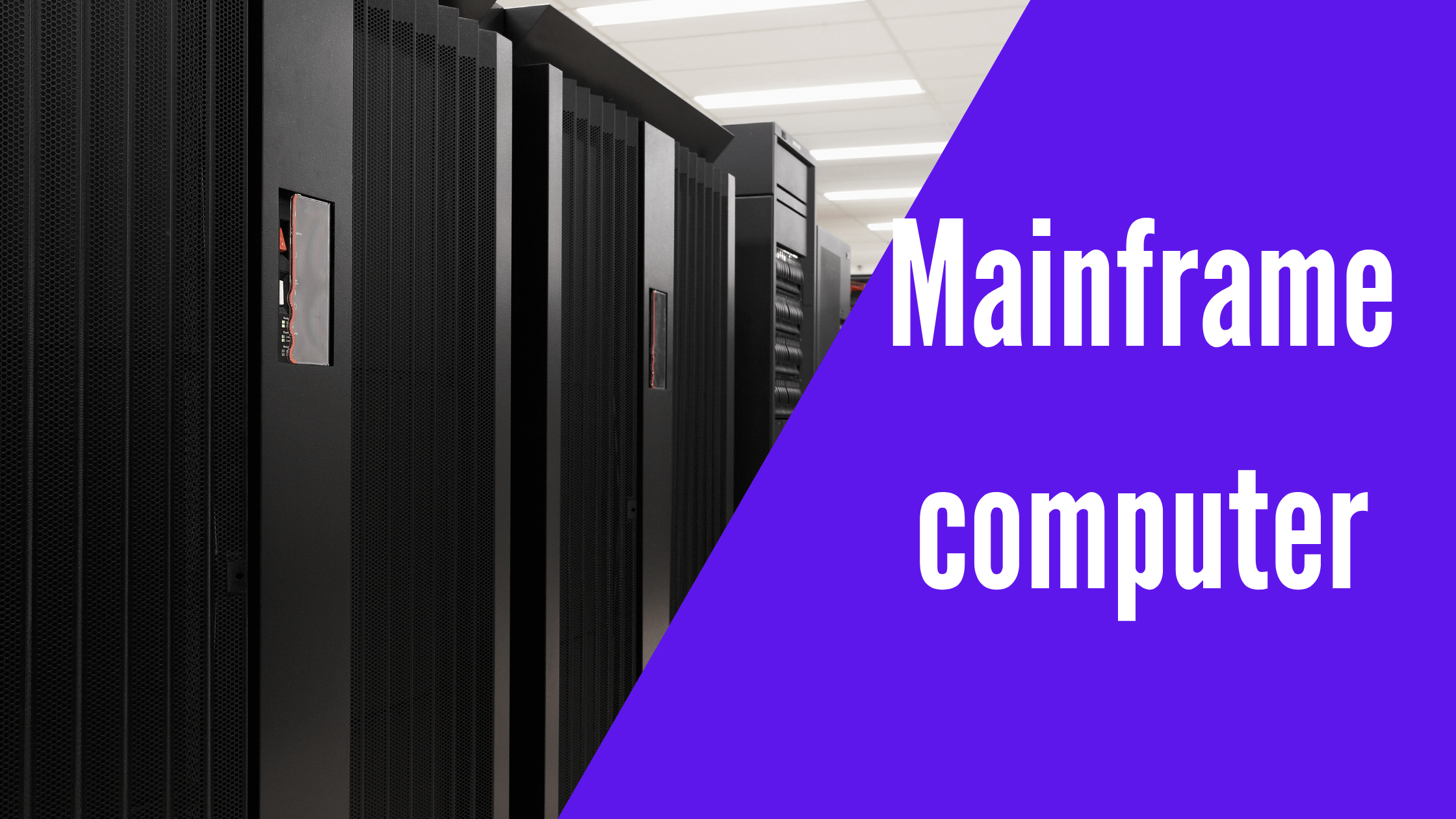Last updated on June 17th, 2024 at 11:45 am

While there are many different computers on the market today, one type of computer that has been around for many years but has changed – evolved – is the mainframe computer. Even though some have classed this type of computer as dinosaurs, they have remained popular with large companies and organizations where speed, accuracy, and reliability are important to their information technology architecture. Keep reading to learn more about:
- What is a mainframe computer;
- Characteristics of mainframe computers;
- What mainframe computers are used for;
- What was the name of the first mainframe computer; and
- When it was developed.
Definition of a mainframe computer
Mainframe computers, sometimes referred to as big iron, are a type of computer designed to process billions of instructions in real time. They are more powerful than any general-purpose computer but do not reach the processing power of a supercomputer.
Mainframe computers have at their core the processing power of several CPUs and a huge amount of RAM (random access memory). They have two types of CPUs, the normal processor and a system assistance processor (SAP). The SAP is dedicated to controlling the flow of data in the computer. Today’s mainframe computers have at least 1 SAP.
Mainframe computers are designed to have many terminals connected to them. As such, they are often used as servers and are typically accessed by hundreds of users at a time.
These computers are commonly used by large organizations for critical data processing, such as statistics, censuses, and transaction processing. They can be found in organizations where throughput is important. Examples of such organizations are banks, governments, utility companies, insurance companies, etc.
Related Article: Mobile devices and desktop computers.
Throughput refers to the rate at which computers are able to process and output data and information over a specific period.
Now, what exactly are the characteristics of mainframe computers? What makes them stand out from the rest?
Characteristics of mainframe computers
- Size: Mainframe computers are quite large in size but are still not as big as the supercomputer. In fact, modern mainframe computers are much smaller than the early ones. They are not large enough to fill a room.
- Speed and throughput: The fact that the mainframe computer has multiple processors and a large amount of memory allows it to work far faster than the typical general-purpose computer. In fact, the mainframe computer processes large volumes of data in real time.
- RAS: Mainframe computers are designed to be reliable, available, and serviceable (RAS). When hardware and software updates are needed, there is generally no need to stop the computer in order to do so. Instead, because of the way these systems are built, both software and hardware can be updated while the system is running. This is extremely important in businesses where downtime can be very costly.
- Security: Mainframe systems are not vulnerable to viruses and other types of attacks. Only users with the correct level of security clearance are able to access the data stored on mainframes.
- Operating system: Mainframe computers are able to run multiple operating systems at the same time.
The first mainframe computer
According to Linuxhint, the first mainframe computer was the brainchild of Howard Aiken, a student of Harvard University, and it was developed by IBM. The computer was first called the Automatic Sequence Controlled Calculator(ASCC) by IBM. Later after a rift developed between Aiken and IBM, he called the computer Harvard Mark1.
IBM released Mark 1 on August 7th, 1944. The Mark1 was so large it filled an entire room.
The mainframe computer was first developed by Howard Aiken/IBM.
Some examples of mainframe computers are:
- The IBM zSeries;
- HP’s NonStop; and
- Fujitsu’s BS2000.
If you are an information technology student, you may be interested in our article on the components of a computer system as well.
 Skip to content
Skip to content 